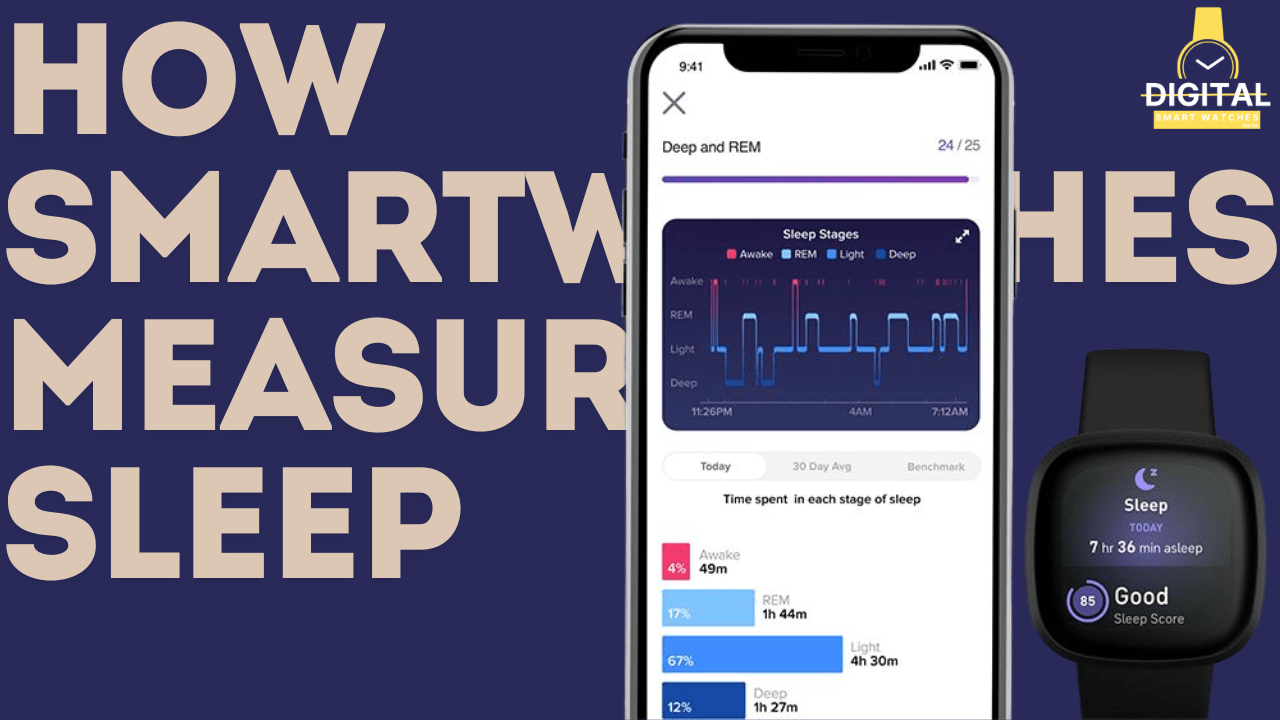How Smartwatches Measure Sleep: Unlocking Sleep Secrets 2024
How Smartwatches Measure Sleep: Decoding the Science
As the digital era advances, smartwatches have become essential companions seamlessly integrating into our daily routines. Beyond simply telling time, these wearable marvels now serve as vigilant protectors of our health, meticulously monitoring various facets of our well-being, such as the enigmatic realm of sleep. Yet, the intricacies of how smartwatches discern the nuances of our sleep patterns remain veiled in technological obscurity. This text delves into the intricate science of wristwatch sleep tracking, guiding readers through an exploration of the methods, progressions, and accuracy of these gadgets in unveiling the enigmas of our nightly behaviors.
At the heart of wristwatch sleep tracking is a combination of advanced methodology and cutting-edge technology. From the fine nuances of actigraphy, which measures the tiniest of our movements, to the throbbing rhythms captured by heart rate monitoring, these devices arrange a symphony of data points to define our sleep architecture.
Despite this technical symphony, problems remain, ranging from the delicate nuances of individual variability to the daunting job of precisely distinguishing the kaleidoscopic stages of sleep. As we embark on our journey into the realms of sleep research and wearable innovation, we will encounter a landscape in which precision meets possibilities, and where the intersection of technology and biology promises to illuminate the route to restful nights and invigorated days.
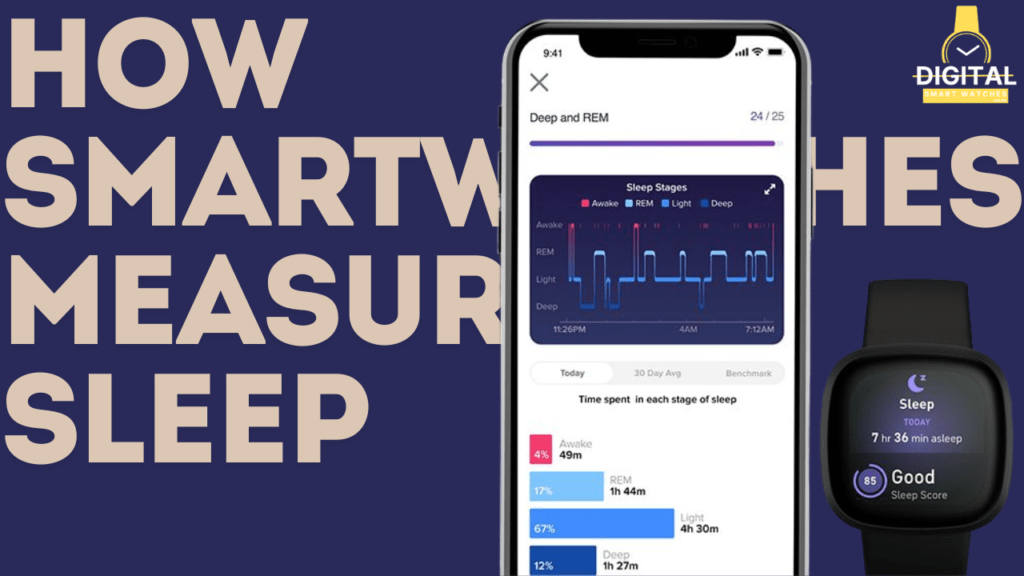
How Smartwatches Measure Sleep: Understanding Sleep
How Smartwatches Measure Sleep: Indeed, before delving into the complexities of how smartwatches track our sleep, it’s critical to understand the fundamental nature of sleep. Sleep, a complicated physiological phenomenon, is much more than just unconsciousness. It is a dynamic process with several stages, each playing a unique function in promoting physical and mental renewal.
First, we experience light sleep, a transitory phase that marks the beginning of our sleeping trip. During this stage, our bodies begin to relax and brain activity lowers, preparing us for deeper levels of slumber. Deep sleep follows, ushering in a period of profound relaxation and cellular healing. During this stage, our bodies go through important maintenance activities like muscle growth and tissue repair, while our minds consolidate memories and prepare for the day ahead.
Finally, we enter REM (rapid eye movement) sleep, a compelling state in which dreams unfold against a background of increased brain activity. REM sleep plays an important role in cognitive function, emotional control, and memory consolidation, all of which contribute to our overall mental health.
As we progress through these many sleep stages, our bodies orchestrate a symphony of physiological changes, ranging from changes in heart rate and breathing patterns to variations in brainwave activity. Smartwatches are designed to discern these nuanced variations, providing insights into the ebb and flow of our nighttime voyage. Thus, armed with a core understanding of sleep’s varied nature, we set out on a mission to unlock the mysteries of wristwatch sleep tracking, going deeper into the regions where technology meets the essence of our restorative sleep.
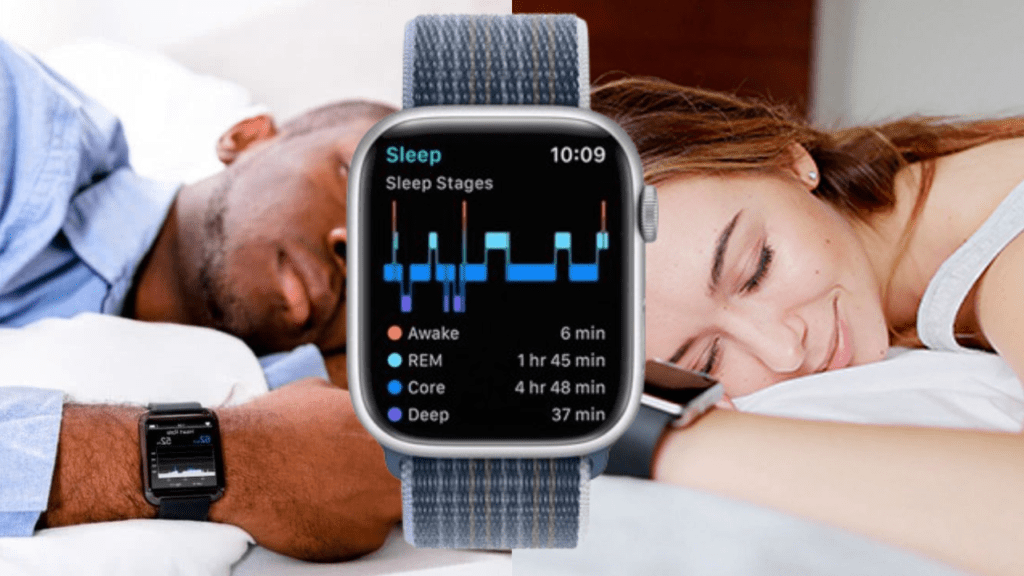
How Smartwatches Measure Sleep: Methods of Sleep Tracking
How Smartwatches Measure Sleep: Smartwatches, as wearable technology, act as multifaceted guardians of our well-being, applying a trio of approaches to decipher the complexities of our sleep. Actigraphy serves as a foundation, utilizing the capabilities of accelerometers to meticulously trace our nighttime motions. These small marvels assess the time and quality of our slumber by measuring subtle fluctuations in wrist motion, providing a glimpse into the depths of our rejuvenating sleep. Meanwhile, heart rate monitoring serves as a steadfast sentinel, always monitoring the repetitive cadence of our pulse throughout the night. Smartwatches use continuous surveillance to reveal the dynamic interplay between our cardiovascular system and the cyclical rhythms of sleep, delivering essential insights into our nighttime journey.
Complementing these approaches is the keen ability to identify movement, a sophisticated algorithmic attempt aimed at unraveling the tapestry of sleep stages. Smartwatches navigate the complex topography of sleep architecture by detecting patterns of motion ranging from modest stirrings to profound stillness. These gadgets use nuanced analysis to detect small transitions between light sleep, deep sleep, and REM sleep, creating a vivid portrayal of our nocturnal journey. Thus, equipped with a trifecta of technological ingenuity, smartwatches go on a journey to decipher the mysteries of our sleep, providing illumination in the darkness of night.

How Smartwatches Measure Sleep: Actigraphy
How Smartwatches Measure Sleep: Actigraphy emerges as a sleep sentinel, using movement patterns to reveal the mysterious domain of nocturnal repose. Embedded within the elegant confines of smartwatches, this technology acts as a silent watcher, methodically tracking the ebb and flow of our sleep. Accelerometers allow these gadgets to detect the subtle symphony of wrist motions, from the gentle sway of beginning tiredness to the serene stillness of deep sleep. As the night progresses, actigraphy meticulously captures the times when we succumb to the embrace of sleep, awaken to greet the sun, and navigate the labyrinthine routes between various sleep stages. Despite its scientific prowess, actigraphy is not immune to the whims of human physiology and environmental factors.
Indeed, the accuracy of actigraphy is a delicate dance influenced by a variety of parameters, ranging from device placement to the sensitivity of motion detection algorithms. The placement of the wristwatch on the wrist, for example, can have a substantial impact on the accuracy of sleep data recorded, with variations in positioning potentially masking the intricacies of sleep onset and length. Furthermore, accelerometers’ sensitivity to tiny movements creates a delicate balance between precision and noise, with ambient disturbances or restless sleep potentially distorting the depiction of sleep architecture. Thus, while actigraphy provides an intriguing peek into the dynamics of our nocturnal cycles, its effectiveness is dependent on precise calibration and contextual interpretation.

How Smartwatches Measure Sleep: Heart Rate Monitoring
How Smartwatches Measure Sleep: Buried within the elegant boundaries of smartwatches, heart rate monitoring emerges as a steadfast sentinel, alert to the steady cadence of our nighttime life. Throughout the peaceful depths of sleep, our heart’s speed creates a symphony of throbbing beats, each beat a witness to the complicated dance of physiological equilibrium. Smartwatches use photoplethysmography sensors to track the ebbs and flows of our cardiovascular vitality with amazing precision as we sleep. These gadgets act as silent sentinels, constantly monitoring our heart rate as we navigate the complex paths between sleep stages.
However, within the peaceful symphony of slumber, the accuracy of heart rate monitoring faces severe challenges in the form of motion artifacts and environmental variables. The small tremors of movement, whether caused by nocturnal restlessness or environmental disturbances, cast transitory shadows on the accuracy of heart rate measurements.
Furthermore, the environmental characteristics of our sleeping environment, such as temperature variations and the gentle embrace of bedding, present further hurdles to heart rate monitoring accuracy. Despite these challenges, smartwatches remain steadfast, utilizing complex algorithms and sensor technology to determine the true cycles of our nocturnal vitality. Thus, while the path to precision may be beset with challenges, the quest for understanding into the mechanics of our sleep stays unaffected, guided by the steady pulse of innovation.

How Smartwatches Measure Sleep: Movement Detection
How Smartwatches Measure Sleep: Hidden beneath the complicated circuitry of smartwatches is the astute prowess of movement detection algorithms, a technical marvel prepared to untangle the multicolored tapestry of sleep cycles. As the night progresses, these algorithms dive into the depths of human slumber, understanding the subtle variations of nocturnal movements with pinpoint accuracy. From the delicate stirrings of light sleep to the profound quiet of deep repose, smartwatches serve as silent sentinels, precisely charting the periodic cadence of our nocturnal energy. These sensors detect the mysterious transitions between sleep stages using movement patterns such as the delicate ballet of tossing and turning, providing a tantalizing insight into the changing landscapes of our nocturnal voyage.
However, within the symphony of nighttime motions, the quest for correctness is interrupted by transient shadows thrown by the complexity of human biology. While movement detection algorithms show promise in unlocking the mysteries of sleep stages, they operate in a terrain fraught with nuances and ambiguities. Individual sleep patterns vary greatly, from nocturnal restlessness to slight tremors caused by ambient disturbances, posing serious difficulties to the accuracy of movement-based sleep stage classification.
Furthermore, the complexities of REM sleep, which is characterized by paradoxical immobility amidst increased brain activity, present a tremendous challenge for movement detection algorithms to overcome. Thus, while movement detection provides a window into the dynamic rhythms of our nightly slumber, its pursuit of perfection is a continual voyage, guided by the steady pulse of innovation and the insatiable pursuit of insight into the mysteries of sleep.

How Smartwatches Measure Sleep: Sleep Stage Classification
How Smartwatches Measure Sleep: In the environment of wristwatch sleep tracking, a big hurdle looms in precise sleep stage classification. Despite advances in computational sophistication and sensor technology, the drive for precision runs into challenges entrenched in the delicate tapestry of human sleep. While developments have improved the accuracy of sleep stage classification, complexities exist, offering serious challenges to fidelity.
Individual variability appears as a persistent enemy, putting doubt on the veracity of sleep stage data collected by smartwatches. From the delicate quirks of sleep architecture to the intricate cycles of nocturnal vigor, each person presents a distinct mosaic for algorithms to interpret. Furthermore, the possibility of sleep problems looms large, adding layers of complication to the classification process. Insomnia, sleep apnea, and restless leg syndrome create complicated patterns that test the limits of algorithmic interpretation.
Furthermore, the ambient milieu of our sleeping environment has a significant impact, with temperature, noise, and light levels affecting the shapes of our nocturnal slumber. Thus, while the march of technical innovation heralds promise, the pursuit of precision in sleep stage classification remains an ongoing odyssey, guided by the unwavering pursuit of insight into the mysteries of sleep.

How Smartwatches Measure Sleep: Accuracy and Reliability
How Smartwatches Measure Sleep: In the world of smartwatch sleep tracking, precision and reliability are the twin pillars that shape our perception of nocturnal rest. However, the accuracy of these insights is dependent on a complex interplay of elements, ranging from the quality of the device itself to the sophistication of the algorithms that power its performance. As technology advances, each iteration introduces new developments that hold the potential of increasing precision in monitoring our sleep cycles.
Indeed, comparison studies using the gold standard of polysomnography provide insights into the usefulness of smartwatch sleep tracking. While some studies find encouraging links between smartwatch data and polysomnography results, others highlight inconsistencies and limits. These variations highlight the challenges of converting physiological nuances into measurable measurements. As a result, for consumers navigating the maze of sleep data supplied by smartwatches, it is critical to develop a comprehensive understanding of both the devices’ capabilities and limits. By adopting an informed interpretation attitude, users can use smartwatch sleep tracking findings to inform and optimize their nocturnal routines, paving the way for improved well-being and restorative sleep.
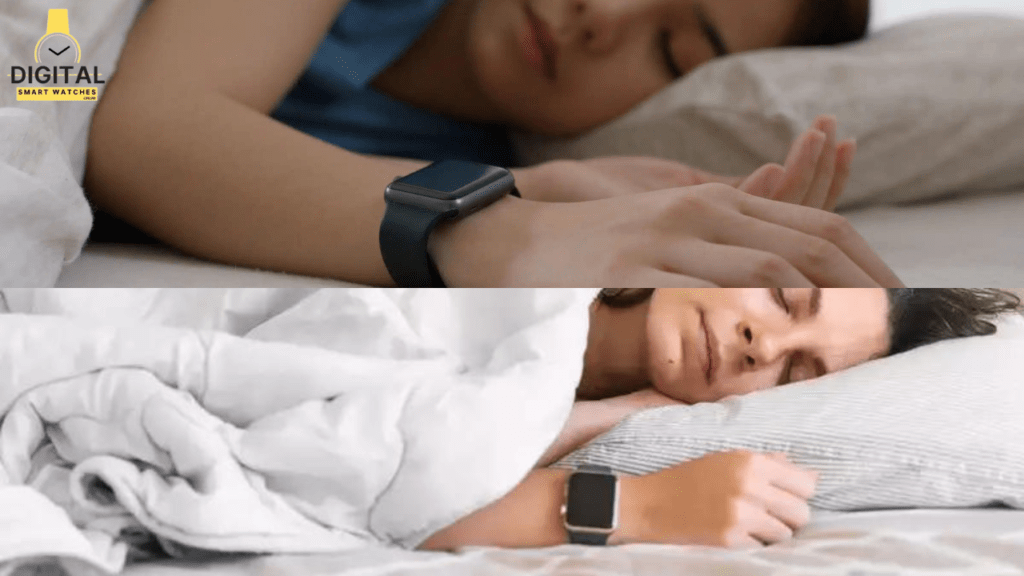
How Smartwatches Measure Sleep: Tips for Optimal Sleep Tracking
How Smartwatches Measure Sleep: Adherence to specific suggestions and best practices can be quite beneficial for consumers looking to improve sleep tracking accuracy with smartwatches. Ensuring the device’s secure location on the wrist is a fundamental tenet for reducing potential inconsistencies in movement detection and heart rate monitoring. Furthermore, diligent attention to optimal device positioning improves the reliability of the sleep data recorded, lowering the possibility of artifacts that could distort insights into sleep patterns.
Consistency emerges as a guiding principle in the pursuit of optimal sleep tracking, with strict adherence to established sleep routines resulting in a solid baseline for analysis. By adhering to normal sleep-wake schedules and bedtime habits, users allow smartwatches to detect relevant patterns in the nightly symphony of physiological rhythms. Furthermore, the addition of subjective sleep quality observations supplements the objective measurements offered by smartwatches, giving users a more complete picture of their nocturnal rest. With this symbiotic synthesis of quantitative data and qualitative insights, users may traverse the world of sleep tracking with greater clarity and empowerment, unlocking the potential for improved well-being and restorative sleep.
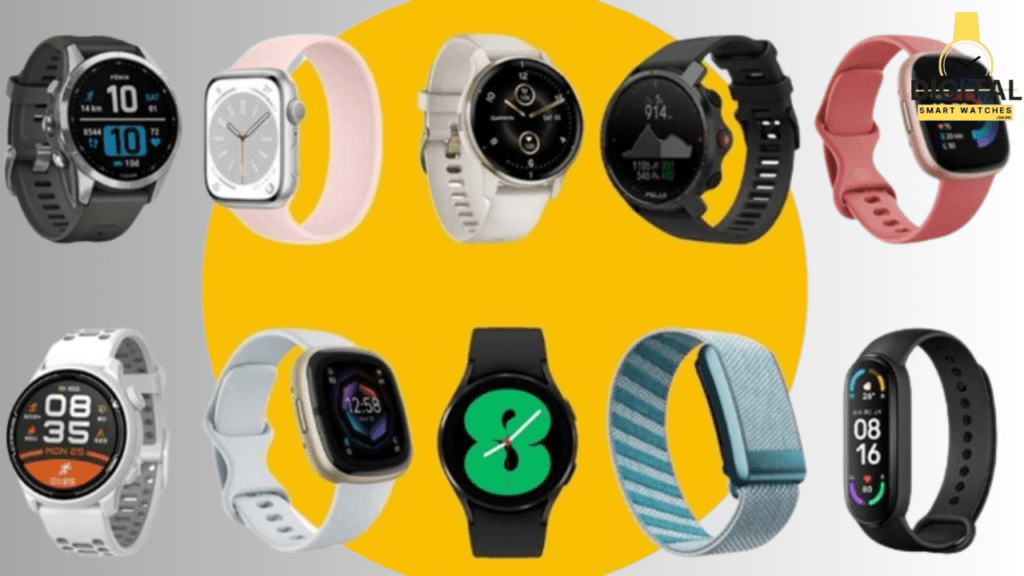
How Smartwatches Measure Sleep: Future Directions
How Smartwatches Measure Sleep: The future of wristwatch sleep tracking is full with promise, situated at the intersection of technical innovation and scientific investigation. As sensor technology advances and machine learning algorithms become more advanced, the landscape of sleep monitoring undergoes a transformation. The dawn of tailored sleep tracking solutions is on the horizon, pushed by technological developments that provide consumers with unmatched insights into their nocturnal patterns. From refined sensor arrays that record the tiny subtleties of physiological dynamics to adaptive algorithms that detect patterns in the nocturnal symphony, sleep monitoring is entering a new era of precision and customisation.
Furthermore, collaborations between wearable technology businesses and sleep researchers serve as lighthouses, illuminating the route to better understanding and application. Through synergistic alliances, insights gained from the frontiers of scientific investigation are combined with the technological ability of industry leaders. As a result, the boundaries of knowledge are pushed, revealing deep insights into the complex relationship between sleep and health. Thus, as technology advances inexorably, the future of smartwatch sleep tracking emerges as a monument to the limitless potential of human invention, set to usher in a new era of health and vigor.
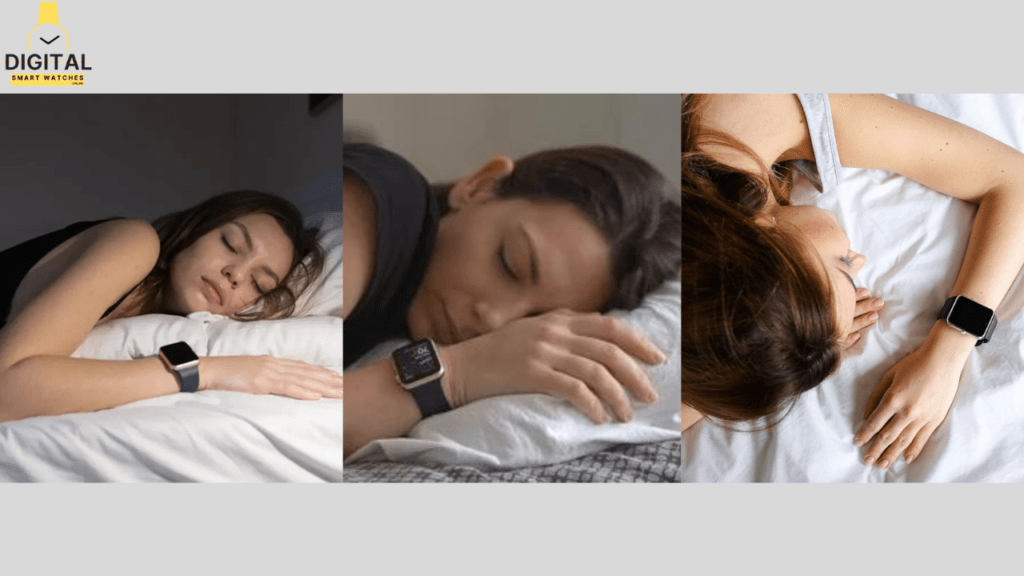
Conclusion:
Finally, the voyage through the science of wristwatch sleep tracking reveals a beautiful landscape in which technology meets the essence of our rejuvenating slumber. From the sophisticated methodology of actigraphy and heart rate monitoring to the astute prowess of movement detection algorithms, smartwatches navigate the labyrinthine pathways of sleep with precision and potential. However, despite the marvels of innovation, obstacles remain, ranging from the subtle nuances of individual variability to the daunting job of exact sleep stage classification.
However, as we stand on the verge of technological advancement, the future of smartwatch sleep tracking holds intriguing promise. With developments in sensor technology, machine learning algorithms, and interdisciplinary collaborations, the horizon broadens, providing new insights into the secrets of our nighttime cycles. As consumers seek restorative sleep, best practices and informed data interpretation serve as guiding beacons, illuminating the route to optimal well-being and vitality.
In this voyage, the fusion of technology and biology ushers in a new era in which precision meets possibilities, and the convergence of innovation and understanding reveals the path to restful nights and energized days. Thus, as we chart a course for a future defined by improved sleep tracking systems, we are guided by the unwavering pulse of innovation and the steadfast pursuit of insight into the mysteries of sleep.

